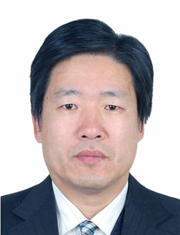
Prof. Jinxi Zhang
College of Metropolitan Transportation, Beijing University of Technology, China
Title: Innovative Recycling Method of Construction & Demolition Waste Materials
Abstract:
After several decades of high-speed construction process, a huge number of infrastructures, such as buildings, roads and bridges, have been constructed, which has brought great convenience to people's life. In the same time, a big quantity of Construction & Demolition waste is generated every year in all of the world. About 30 to 50 million tons Construction & Demolition waste was generated in Beijing city every year. On the other hand, a large amount of natural resources is consumed, resulting in increased carbon emissions and depletion of natural resources. The effective way to achieve sustainable development of infrastructure construction is to reuse the recycled materials made of waste resources, such as the recycling of Construction & Demolition waste. In this study, the innovative full recycling technologies of Construction & Demolition waste is studied. Different from other countries, the Construction & Demolition waste generated in China contains a certain proportion (up to maximum 50%) of red bricks, which reduces the quality of Construction & Demolition waste and increases the difficulty of recycling. In order to achieve the full recycling of Construction & Demolition waste, the indoor experiment, outdoor experiment and application in construction project was executed. In cooperation with relevant companies, this study established the generation, collection and processing system of Construction & Demolition waste. The Construction & Demolition waste was divided to “full concrete waste” and “concrete waste containing red brick” materials based on their original sources. The Construction & Demolition waste was crushed, screened and then divided to aggregates with different size and gradation. The recycled concrete aggregate (RCA) was used to produce recycled concrete (RC)(1), (2), the aggregates containing red brick particles was used to produce cement or lime stabilized semi rigid base material of pavement(3), and the remained powder and low quality aggregate was used to produce backfilling material(4), (5). The design method of each kind of mixture was studied, and the strength formation mechanism and performance of each kind of recycled materials were well investigated. The result shows that, if the Construction & Demolition waste was properly collected, classified and processed, the Construction & Demolition waste will become the potential and possible source of civil engineering materials with good quality. The recycled concrete (RC) made of recycled concrete aggregate (RCA) can be used in the appropriate project, such as the pavement of road or square, the foundation of bridge or building, even in the important structure of buildings. The semi rigid base material made of recycled aggregates containing red brick particles has perfect performance with unconfined compressive strength 0.8 to 4.0 MPa and sufficient durability. High fluidity backfilling material made of Construction & Demolition waste is a new kind of backfilling material for using in different backfill project, such as foundation pits, underground works, pipe trenches, etc. High fluidity backfilling material has proper workability, proper and adjustable compressive strength (0.5-8.0 MPa) and satisfied durability. The technology and materials developed by this research have been widely applied in the construction project of Beijing city and some area of China, which has generated significant social, economic, and environmental benefits.
Biography:
Jinxi Zhang, PhD, Professor. He is now working at the College of Metropolitan Transportation, Beijing University of Technology, China. He received the Bachelor’s degree from Hebei University of Technology in 1985, the Master’s degree from Beijing Research Institute of Municipal Engineering in 1988, and the Doctoral degree from Iwate University of Japan in 2000. From 1988 to 1996, he worked at the Beijing Research Institute of Municipal Engineering, etc. From 2000 to 2003, he worked as a Lecturer and Associate Professor at the Department of Civil and Environmental Engineering, Faculty of Engineering of Iwate University, Japan. Since 2003, he has been working at Beijing University of Technology, China.
His research interest includes new construction materials for road engineering, recycling of waste materials in road engineering, durability of road infrastructure, and the detection and evaluation methods of pavement performance. He has presided over more than 20 scientific research projects, and has been granted 6 scientific and academic awards by different organizations. He published more than 340 academic papers and 5 monographs.